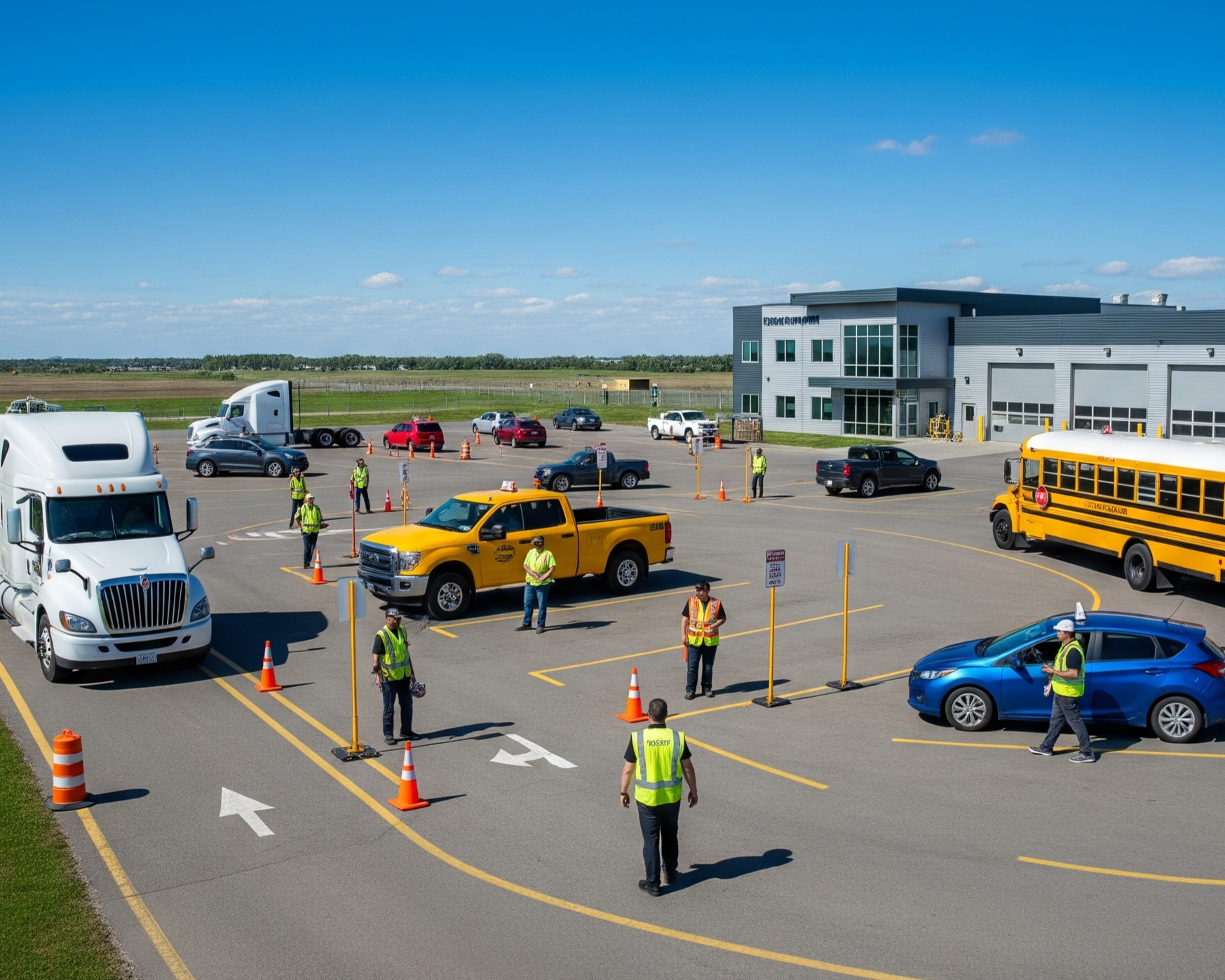Class 1 vs Class 3 Driver Training – Which One Is Right for You?

If you’re planning to start a career in trucking or commercial vehicle operation in Manitoba, you’ve likely come across two major license types—Class 1 and Class 3. While both licenses are highly valuable, they serve different purposes and lead to different career opportunities.
In this article, we’ll break down the differences between Class 1 and Class 3 driver training, helping you choose the right path based on your goals. Whether you’re in Winnipeg, Steinbach, or Portage la Prairie, this guide will provide all the insights you need.
What Is a Class 1 License?
A Class 1 license in Manitoba is the highest-level commercial driver’s license. It allows you to operate semi-trailer trucks and tractor-trailer units across provincial and international borders. This license is often required for long-haul trucking jobs, logistics companies, and cross-country freight services.
Class 1 Training Includes:
- Vehicle inspection procedures
- Air brake endorsement
- Coupling and uncoupling of trailers
- On-road driving and backing skills
- Regulations and safety protocols
- Hours of Service, load securement & more
What Is a Class 3 License?
A Class 3 license allows you to drive single motor vehicles with three or more axles, such as dump trucks, garbage trucks, or tow trucks. It’s often a requirement for construction, delivery, or utility-based jobs within city limits or regional areas.
Class 3 Training Includes:
- Driving heavy-duty single vehicles
- Performing pre-trip inspections
- Load safety and weight distribution
- Operating within urban and industrial areas
- In-depth practice with combination vehicles (if applicable)
Class 1 vs Class 3: Key Differences
| Feature | Class 1 License | Class 3 License |
|---|---|---|
| Vehicle Type | Tractor-trailers, semis | Dump trucks, tow trucks, utility trucks |
| Job Opportunities | Long-haul, cross-border freight | Local/regional delivery, construction |
| License Scope | Covers Class 3 + lower classes | Only valid for single vehicles |
| Training Hours | 121.5 or 244-hour program (at Barnala) | 5–10 hour focused training |
| Earning Potential | Higher (due to long-haul work) | Moderate (city-based roles) |
Who Should Choose Class 1 Driver Training?
Choose Class 1 if:
- You want a career in long-distance trucking
- You’re looking for higher earning potential
- You’re open to traveling across provinces or the US
- You want the flexibility to drive multiple types of trucks
Who Should Choose Class 3 Driver Training?
Choose Class 3 if:
- Do you prefer city-based or regional jobs
- You’re interested in construction or waste management
- You want to get licensed faster and with less cost
- You may upgrade to Class 1 later
Where Can You Get Class 1 or Class 3 Training in Manitoba?
At Barnala Driver Training Academy, we offer professional and government-approved Class 1 and Class 3 driver training in:
- Winnipeg
- Steinbach
- Portage la Prairie
With experienced instructors, modern training vehicles, and a student-first approach, we prepare you for real-world success on and off the road.
Can I Upgrade from Class 3 to Class 1?
Absolutely. Many drivers begin with Class 3 training to get job experience quickly, then upgrade to Class 1 once they’re ready for larger responsibilities and bigger paychecks. Our flexible programs make it easy to advance your career at your own pace.
Frequently Asked Questions (FAQs)
1. What is the difference between Class 1 and Class 3 licenses in Manitoba?
Class 1 allows you to drive semi-trailer trucks; Class 3 is for single heavy-duty trucks like dump trucks.
2. How long does Class 1 driver training take in Manitoba?
Barnala offers both 121.5-hour and 244-hour programs.
3. Is Class 3 driver training faster than Class 1?
Yes, Class 3 training is shorter, typically 5–10 hours, making it quicker and cost-effective.
4. Can I upgrade from Class 3 to Class 1 later?
Yes, many drivers begin with Class 3 and later move up to Class 1.
5. Which license is better for long-haul trucking?
Class 1 is required for long-distance or cross-border freight transportation.
6. Where can I take Class 3 driver training in Winnipeg?
At Barnala Driving Academy – offering certified Class 3 training.
7. What are the job opportunities with a Class 3 license?
Jobs include dump truck drivers, municipal services, and local delivery.
8. What is the cost difference between Class 1 and Class 3 training?
Class 3 is more affordable due to fewer training hours.
9. Are Class 1 and Class 3 licenses valid across Canada?
Yes, both are valid across provinces, though endorsements may vary.
10. Which cities offer Barnala’s Class 1 and Class 3 training?
Winnipeg, Steinbach, and Portage la Prairie.
Final Thoughts
Whether you choose Class 1 or Class 3 driver training, you’re making a smart investment in a high-demand field. Think about your career goals, lifestyle preferences, and job flexibility when deciding.
And when you’re ready, Barnala Driver Training Academy is here to guide you with certified training, expert support, and job-ready programs across Manitoba.




